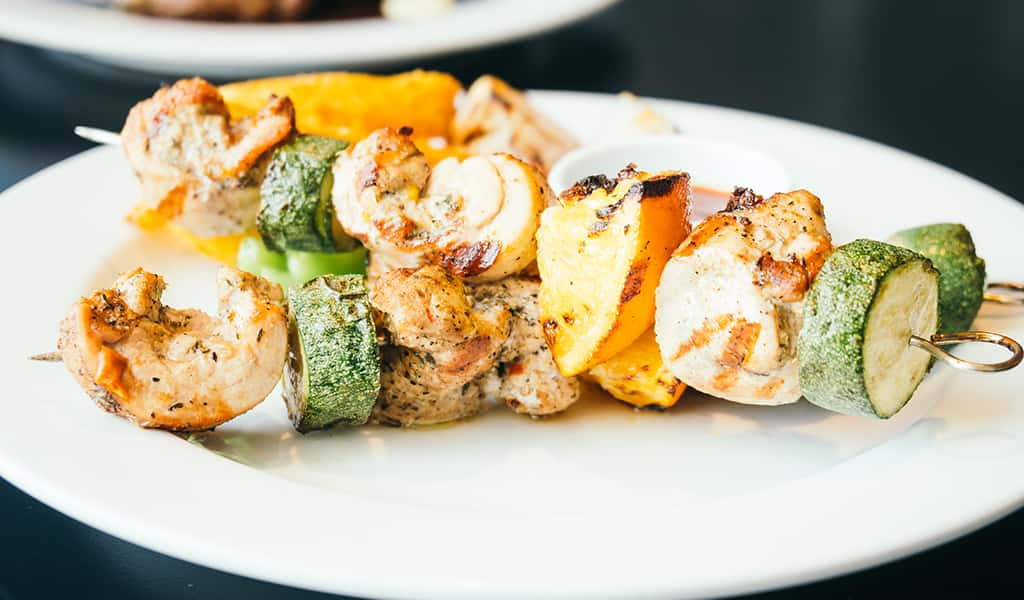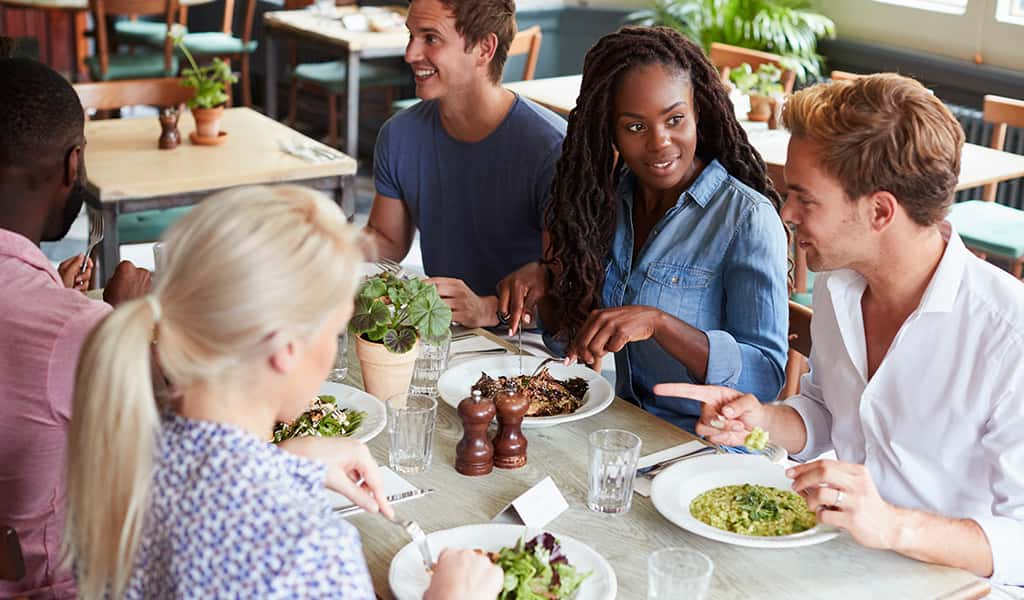Cannabis stigma - is there a change on the way?
is there a change on the way?
In a Caddle survey of approximately 10,000 Canadian non-cannabis users earlier this year, our team found that 77% of respondents had no intention of trying cannabis once legalized in Canada. When asked about potential reasons why they might potentially try cannabis, 49% of respondents maintained that they simply would never try it. 43% were against legalization of recreational cannabis in Canada, 53% either disagreed or strongly disagreed that legalization would be good for society, and 54% of respondents felt there is a negative stigma still associated with cannabis use.

What are the stigmas?
Last year, the Government of Canada commissioned an official Canadian cannabis survey, including both users and non-users from 16 years and up. In the survey of 9,215 Canadians, 77% of respondents felt that cannabis could be habit forming, and while nearly half indicated positive effects on mood, anxiety, sleep and creativity, the majority of respondents felt that cannabis can negatively affect motivation (57%), memory (58%), concentration (59%), attention (60%) and decision making (62%). Interestingly, while alcohol was widely considered the most socially acceptable substance, more respondents felt cannabis was socially acceptable (28%) than tobacco (19%).
Is legalization driving the stoner stereotype away?
In a 2017 study performed by U.S.-based cannabis research firm BDS Analytics, the researchers found that the average household income among Californian consumers is $93,800 compared to $74,350 for non-users. Californian users are more likely to hold master’s degrees, and Colorado users are more likely to be employed full-time compared to non-users. In the same study, BDS Analytics found that users from California and Colorado (two of the nine United States where cannabis is currently legal) are more likely to consider themselves very social, and are more likely to enjoy the outdoors and volunteer their time compared to non-users from the same states.

How will the stigma turn a corner?
For the non-users surveyed by Caddle, the leading reasons why they might try recreational cannabis once legalized included pain relief and relaxation (14%), curiosity (12%), and reduced stress and anxiety (10%). Wellness is a constant reason for interest and usage according to most research available so far. In a report by Deloitte, the top two reasons for using recreational cannabis include relaxation and sleep (66%), and to reduce stress or anxiety (62%).
Read more from the Caddle Cannabis Survey
Canadian identity: Seven similarities of the common Canadian
Although known for embracing the many cultures that make up Canada’s mosaic, it appears our multicultural population share more in common than one might expect. In a recent Caddle survey, 70% of respondents felt they have much in common with Canadians from other provinces – and here are seven of the many traits we share:
1. Frenzied fans of hockey
Invented in Canada, hockey is our official national sport. Canadian-born players continue to make up the majority of the National Hockey League at 41.6%, and our national teams have dominated on the international stage for generations.

2. Notoriously nice
If there are common characteristics non-Canadians cite of Canadians, it’s that we’re warm, welcoming, and polite – if not to a fault. In fact, without exaggeration, we’re likely to apologize even if you’re the one truly at fault. Sorry about that.
3. Hankerin’ for Hortons
Truly ubiquitous, Tim Hortons is the largest fast food restaurant and most popular coffee in Canada. Even the most hard-hearted coffee hipster will concede that Tims/Timmies coffee is iconic, beloved across the country, and a definite road trip staple.
4. Cottage country crazy
Home of approximately 60% of the world’s lakes, it’s no surprise that Canadians prefer to spend summer weekends at the lake.

5. Comedic claim to fame
From Catherine O’Hara to Eugene Levy, Jim Carrey to Mike Myers, Michael Cera to Seth Rogan – Canada is a historic hotbed for comedic talent.
6. Desired differentiation
If there’s one not-so-nice quality many Canadians share, it’s an almost passive-aggressive need to be known as distinctly not American – especially in our travels abroad.
7. Eh B C’s
For a word so short, there’s no shortage of its use. We often do not realize how much we say “eh” until we step foot in another English-speaking country where it’s not commonly used. Go figure, eh?
Restaurants dining for Canadian food
In 2017, Dalhousie University conducted a survey of 1,019 Canadians regarding their dining habits – how often they dine out, get take-out or delivery, dine alone or with others, and whether they cook at home. 42% of respondents claimed to buy ready-to-eat meals or dine at a restaurant once or twice a week, and 3% admitted to doing so daily. Experts concluded that the top reason for dining out so regularly is a lack of time to prepare meals at home.

With Canadians dining at restaurants frequently, what is causing Canadians to choose specific restaurants? Caddle set out to determine this in a recent survey, and 39% of respondents cited word of mouth as their top reason. Coupons came in second at 14%, menu options at 13%, online reviews and social media tied at 12% each, then a big drop to newspaper/magazine articles at 3%. What may come as the biggest surprise is that 0% of respondents credited online ads as a prompt to try a new restaurant.
This doesn’t necessarily mean that restaurants should cancel any paid placements – there are good reasons to remain open to advertising and various ways to achieve effective ads. Paid endorsements by social media influencers, Google AdWords to improve your visibility in search, boosted posts on relevant platforms such as Instagram – there are many avenues to consider and explore, regardless of budget.

However, what this research does reveal to restaurants is that above all else – what matters most is the quality of what you’re serving and how you serve it (i.e., customer service). Four of the top five reasons why Canadians choose a certain restaurant revolve around these factors. If you provide a memorable meal and impeccable service, diners are more likely to recommend you to family and friends, potentially leave a positive review, and brag about trying your food to their followers.
Reactions to data breaches: Facebook and FOMO
In March 2018, media publications worldwide began outing British political consulting firm Cambridge Analytica for unethical business practices. Beyond the horrifying admission to use of bribery, honey traps and prostitutes to discredit politicians opposing their clients, Cambridge Analytica was revealed to have accessed some 50 million users’ personal data without their permission or awareness via a third party Facebook app called “This is Your Digital Life.”

Surprisingly, the massive news story seemed to do minimal damage to Facebook itself, with the internet’s collective focus on the meme-worthy aspects of Mark Zuckerberg’s testimony to US Congress, and an apparent continuation of usage.
Zephoria reports that there are still more than 2.27 billion monthly active Facebook users (a 10% increase year over year) in Q3 2018 and 1.49 billion daily active users (a 9% increase year over year) as of September 2018.
In a Caddle survey following the breaking news, 66% of respondents claimed to have heard of or read at least a little bit about the Facebook/Cambridge Analytica data scandal; 19% stated that they would delete Facebook due to an information breach; and yet only 4% actually deleted Facebook following the news break. Most surprising is that 90% of the respondents admitted to keeping their Facebook profile despite the news.

The number one reason users stated they would delete Facebook? If Facebook were participating in illegal activities. The second reason? If family or friends stopped using it. And the number one reason for users who keep returning to Facebook daily: to keep up with friends and family.
User prioritization of “staying in the loop” should come as no surprise – the whole point of social networks, originally anyway, was to see what’s going on with your friends and family…but is this trending fear of missing out (FOMO) leaving you at risk of privacy breaches or worse?
For a comprehensive guide on the Facebook/Cambridge Analytica data breach, as well as how to secure yourself following the scandal, be sure to check out this guide from Sarah Perez and Zack Whittaker at Tech Crunch, and remember to be safe when you’re being social!
Digital Dining Trends - Convenience is King
You’re dining at a busy restaurant on a Thursday night and you can’t seem to get your server’s attention. All you want is to get a refill, order dessert or pay your bill. In another scenario, you’re facing down a late night at work and the fate of team dinner rests on your shoulders. No one feels like pizza, but it’s the only reliable delivery option available. Thankfully, these scenarios are less and less common due to rising technology such as tableside and online food-ordering services.

In a survey of Caddle users, 49% of respondents were still unsure about ordering from a tablet in a restaurant, and 66% still unsure about using food delivery apps. However, the relationship between dining and digital seem destined.

SkipTheDishes, which was founded in Saskatoon in 2012, was one of the first nationwide online food delivery networks and focused on secondary markets such as Burnaby, Calgary, Edmonton, Regina, Saskatoon, Winnipeg, Kitchener, Waterloo and Ottawa. In 2016, SkipTheDishes was acquired by Just Eat and continues to expand service in Canada to date, now serving alcohol in select markets.
Digital disrupter Uber, which forayed into food delivery in 2014, has quickly caught up. Earlier this year, Uber CEO Dara Khosrowshahi announced that Uber Eats has a $6 billion bookings run rate and now serving 250 cities globally. Just this past August, Uber Eats expanded within Canada to 30 more communities including Victoria, Regina, Saskatoon, Winnipeg and Halifax.

Tableside reveals a similar trend. Just last year, Eater reported that US casual dining giant Applebee’s embraced tableside tablets at all of its nearly 2,000 US locations and are seeing a 70%+ interaction rate. What’s more, restaurants who are integrating mobile apps into their service are seeing reduced labour costs and higher earnings for each server (including tips) due to higher efficiency, reduced human error, quicker service and a more positive dining experience.
Earlier this year, QSR Magazine predicted that convenience would be one of five trends restaurants need to prioritize moving forward, and it appears the industry is listening.
Cannabis 101: Bud basics explained
CBD and THC
In a 2018 survey of 20,000 Canadians (50% of whom considered themselves cannabis users), the Caddle team found that only 45% of Canadian cannabis users understand the difference between cannabidiol (CBD) and tetrahydrocannabinol (THC). CBD and THC are only two of hundreds of different chemical substances found in cannabis, but are two of today’s most researched substances regarding cannabis and are driving factors in the purchase of particular strains. If you’re new to it, already use it, or would just like to learn more, here are three important aspects to know about cannabis:

1) The plant types
There are two predominant plant types: Sativa and Indica. Canadian cannabis producer Peace Naturals explains that Sativa is used to improve mood, treat chronic pain and anxiety, and increases focus and creativity. On the other hand, Indica improves mental and muscle relaxation, decreases nausea and acute pain, and increases appetite and pleasure.
2) The chemical types
According to CanniMed, THC is the primary psychoactive ingredient in cannabis – i.e., it is responsible for the euphoric high users feel. THC also stimulates appetite, mood, pain relief and relaxation. On the other hand, CBD is often considered the counter to THC. CanniMed explains that CBD is often used to reduce anxiety, insomnia, and is a non-psychoactive, calming chemical substance.

3) The rules
As of October 17, 2018, cannabis is fully legal across Canada. The public possession limit is 30 grams in every province, while the legal age differs (18 in Alberta and Quebec; 19 everywhere else). In Alberta, Manitoba, Newfoundland and Labrador, and Saskatchewan, you can purchase cannabis from private licensed stores; everywhere else you must purchase from a government-operated store. Most provinces offer dried flower, oils, and pre-rolls; edibles are not sold but may be prepared at home. Permitted usage varies by municipality, but you cannot consume while operating a motorized vehicle, near schools and children, on patios and on business properties.
Helpful literature on cannabis is available everywhere – consider checking out the blogs of one of the many growing Canadian cannabis brands, and keep a look out for emerging research now that cannabis is legal. And if you’re considering trying cannabis for the first time, here are a few excellent tips from Toronto-based brand Tokyo Smoke on how to practice safe sesh.
Read more from our Cannabis survey
CPG companies and understanding data
The Evolution of Consumer Shopping Behaviour
The evolution of consumer shopping behaviours and the way CPG brands are now able to communicate and interact with their loyal consumers has been fascinating to watch. Mobile technology has played a pivotal role within this evolution and disruption of the typical brick and mortar channel. During my six years plus years of experience working alongside many of the fortune 500 CPG brands , I have witnessed the many challenges that come along with trying to adopt to this new day in retail.
Working on the sales side of mobile technology platforms allows for this communication and better understanding of loyal consumers. I do want to make it clear that I dislike the term sales within this context.
I see myself as a problem solver, or consultant, an extension to a brands marketing team that is here to genuinely assist with any brand challenge that they are currently facing doing so by using technology.
Technology to Provide Data
The main output from this technology is data, consumer insights, which I believe is one of the, if not THE, most important part of any brands marketing strategy. With the emergence of new legislations and brands already limited control over consumer data,. The CPG industry seems to have fallen behind in gathering and utilizing effective data. Let’s address this and the reasons why this may be the case.

Data as a Resource of Marketing Strategies
Every marketing strategy should start and end with relevant consumer data. This should be monitored and tweaked throughout by new and timely insights. This includes pre-launch, pre-purchase, and post-purchase insights from a relevant audience. Some may argue that this is impossible due to a lack of resources to gather these new and up to date insights. There are definitely challenges to gathering relevant data before, during and after, cost being the main one.
However, the emergence of new platforms and technology has helped with these challenges. It is important to be open to exploring new ways to collect data. To not being afraid to be a first mover within the industry, and most definitely not getting stuck in your old ways.
This industry moves faster than ever, with trends coming and going, so it is critical to take advantage when you can and be able to speak the right language to your loyal consumer. It is even more important to listen to them and then react accordingly.
I see how brands are at the mercy of retailer POS data. For example this is needed to get an understanding of how a new product is performing in market. Once launched, it takes months to be able to receive these insights and then react. This is why brands need to be innovative and think outside the box.

Technology to Understand your Customer
Technology has allowed brands to understand their most loyal consumers more than ever. We need to embrace this and utilize this to our best ability in order to stay relevant and ahead of the competition. Be open to new platforms and new ways of building out your marketing strategy, making sure you’re utilizing data in the most effective way.
CPG brands may not have had control over their data in the past but the opportunity lies in the potential for innovation.
Feel free to reach out to myself and our team here at Caddle to discuss this topic further. We are always happy to demonstrate how we help brands solve challenges with the use of timely and relevant data.
Communication is key, Communication is king.
Customers and Clients
I’d like to think I’ve learned a lot when it comes to dealing with people & relationship building. From my experience in working in customer service for over 4 years, I realize now there is always something to be taught. We’ve all heard the saying, “the customer is always right”. Not to discredit the customer but I’ve learned that in 2019 it’s not that straightforward.
Working with customers is one thing but working with clients is entirely different. From a client perspective, not only do you make the sale but now you must nurture and grow any relationship in order to grow revenue. My mindset was always to keep the customer happy. Now I realize this is the role of my entire team and I assist with this by acting as the advocate for the client.
Currently, working at a startup, I am learning that as similar as customers & clients may be, more effort goes into supporting clients daily. My time is spent supporting clients’ objectives & goals and this is where communication is key in order to make these actions happen.

Teamwork makes everything work
Communication is a key factor in my approach for all involved in sales and campaign management.
A team needs to know how to provide all the details in order to communicate their expert views back to the client for a successful campaign. To dive a little deeper, the client needs to communicate their needs their account manager. Then it is the account managers responsibility to address and communicate those needs to the team in unison to achieve the goal of success for all.
These goals include; organization, time management, managing both internal (colleagues) and external (client) relationships. Every department within Caddle possess their own expertise within their department. By working together in a team, our clients receive the best feedback/improvement in order to meet their objectives.
Through proper engagement & communication with the entire team, the client gets the best experience possible. It’s amazing to see as the many aspects within a team it takes to create and implement a successful campaign, but together the team pulls it off, always!

Every client holds new opportunity for learning and that makes my day much more exciting. I enjoy learning and building the relationships with Caddle clients. I’d like to end by saying, yes, “the customer is always right” and also yes “working together as a team equals success”. Success comes from finding the balance and that’s the role of a strong account manager. Learning how to communicate best gives the best possible service to any potential client.
The Cannabis industry
and marketing to women
Marketing to Women
In a recent survey conducted by Caddle prior to October 17, 2018 (the day cannabis became legal across Canada), we found that 62% of male users were likely to purchase cannabis, while only 45% of female users were likely to do so as well.
This result comes with little surprise, as cannabis use trends have historically leaned more toward men – particularly in places where and times when cannabis has been considered illegal. In a 2012 study by Statistics Canada, 49.4% of male respondents and 35.8% of female respondents admitted to using cannabis at least once in their lifetime.

Legalization of Cannabis
However, with the legalization of cannabis in several U.S. states, across all of Canada, and more and more throughout the world, we’re seeing a rise in the female cannabis consumer. In a 2017 survey of 1,200 adult cannabis users in Colorado and California, cannabis research firm BDS Analytics found that 45% of the overall respondents were women.

Why are women different?
Toronto-based cannabis company Van der Pop focuses on female consumers and shares the following research:
- 87% of women who use cannabis use it as a sexual aid and find it effective
- 3.4 million Canadian women are interested in how cannabis can help them relax; 1.5 million are interested in how it can complement their exercise; 1.3 million want to try including cannabis in their cooking
- 52% of cannabis users say it helps them sleep
- 51% of female users are interested in cannabis’ potential skincare powers
With cannabis now fully legalized across Canada, cannabis producers, consumers and researchers are excited about all of the potential opportunities to improve safety and quality. They also want to learn more about the plant.

Most importantly, the move will hopefully help keep cannabis out of the hands of children, reduce the ability for illegal entities to profit from it, and enable women to feel more empowered in trying and using cannabis for all its potential positive benefits.
If you’d like to learn more about how to safely and legally purchase and use cannabis in your home province, check with the Government of Canada here.
